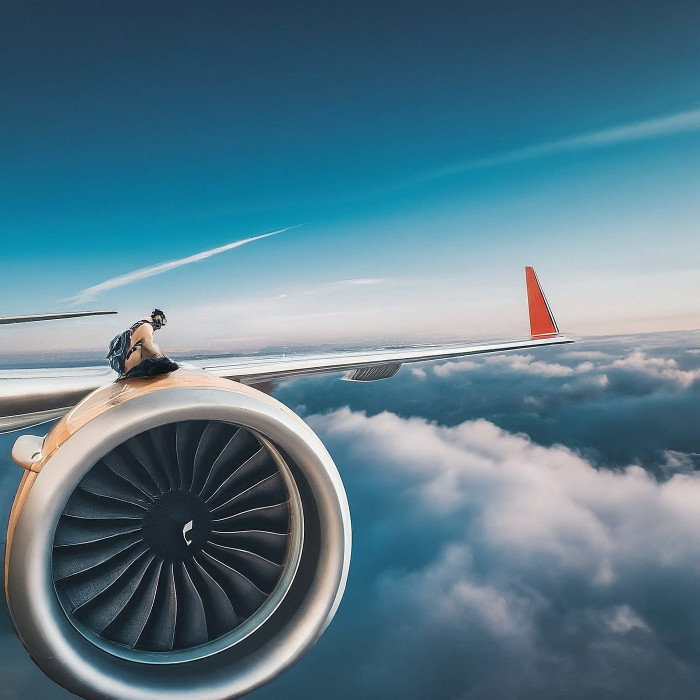The aviation sector is facing huge demand for airframe parts, which has turned into a big challenge for airlines everywhere. As for both the main framework and landing gear sections, getting the right, certified pieces in time has turned into a race. Still, the real reason behind this rush is unclear. What might happen to airlines that don’t handle this soon?
Supply Chain Disruptions: A Lingering Crisis
In the past few years, airline businesses have struggled because of global problems such as the COVID-19 pandemic, international conflicts, and not having of vital resources. Crucial airframe parts are now in short supply because of delays in manufacturing and logistics, so airlines have had to work hard to maintain all their planes.
There is also more pressure on the market now because of the retirement of various airplane models. Since older planes are being retired, there is growing demand for their components, which makes it harder to obtain the necessary items for active aircraft.
Why Airlines Can’t Afford to Wait

Delaying the procurement of hard-to-find airframe parts can have devastating financial consequences. The most immediate risks include:
- Aircraft Grounding: Without the necessary parts, airlines are forced to ground planes, leading to significant revenue losses.
- Operational Delays: Flight schedules become increasingly unpredictable, damaging airline reputations and customer satisfaction.
- Increased Maintenance Costs: Airlines that wait too long may end up paying a premium for last-minute or black-market parts.
- Regulatory Non-Compliance: Failure to secure certified components can result in regulatory penalties or safety violations.
The Role of Strategic Partnerships in Parts Procurement
Airlines are teaming up with specific aviation parts suppliers to handle these problems. Nowadays, having businesses that ensure all parts for turbines, avionics, and aircraft are vital. Airlines that work with strong suppliers can receive the parts they need when expected.
For instance, DK Turbines has grown to be a major name in aviation parts, making it easier for airlines to get hold of hard-to-find equipment. DK Turbines and others in the industry work hard on quality, compliance, and fast supply, which lets airlines avoid problems caused by supply chain interruptions.
The Shift Toward Used and Reconditioned Parts
Because new parts are becoming more scarce, airline companies are choosing to use old, refurbished, or unused parts. Pre-owned parts that are certified can be had for far less, even though they have the same quality as new parts. This helps reduce expenses and, at the same time, makes flying more environmentally friendly by avoiding wasting materials and increasing the useful life of parts in planes.
The Growing Importance of Predictive Maintenance
There is a new trend emerging in aviation that uses technologies to predict when repairs are needed. Using data analytics, sensors, and AI, airlines are able to find issues that might result in failure. Using this approach, airlines can do the following:
- Maintain a proper schedule for repairs: This should decrease downtime and groaning for scarce and expensive parts.
- Less money is needed on emergency replacement parts and any delays they cause.
- Making sure every aircraft is kept in perfect shape at all times.
Future Trends: The Push for 3D Printing and Digital Inventories
The aviation industry is also investing in innovative solutions to mitigate future shortages. Two key trends emerging in the airframe parts market include:
- Through additive manufacturing, 3D Printing helps make replacement parts more efficient and allows for creating essential parts right when they are needed. Airports and maintenance providers are looking at 3D-printed replacements because they can speed up work when supplies are low or take a long time to arrive.
- Airlines and suppliers are now relying on artificial intelligence to know what the future demand will be, helping them avoid shortages by stocking the right amount. Using such systems, businesses in aviation maintenance can save time when shopping for parts, minimize losses, and improve their operations.
The Competitive Landscape: How Airlines Are Adapting
With the race for airframe parts intensifying, airlines are taking proactive measures to stay ahead. Some of the key strategies being implemented include:
- Diversified Supplier Networks: Airlines are expanding their supplier base to ensure redundancy in case of shortages from a single source.
- Long-Term Contracts: Many carriers are locking in multi-year agreements with parts manufacturers to guarantee supply stability.
- In-House Stockpiling: Some airlines are building their own stockpiles of critical components to minimize downtime and prevent supply chain disruptions.
How Government Regulations Impact the Supply of Airframe Parts
Airframe parts are sourced largely based on the rules set by governments and by the industry itself. When purchasing and putting in place components, airlines have to meet the regulations of the FAA and EASA. They help to ensure that everything is safe and dependable, but they might also cause issues in getting certified parts on time.
Governments creating new environmental and safety regulations make it necessary for suppliers and airlines to catch up quickly, which might result in further delays in getting important parts.
Final Thoughts: Time Is Running Out
Securing hard-to-locate airframe parts is crucial for airlines, since it goes beyond simple strategies and is a part of remaining in business. Given that there are challenges with supplies and retiring airplanes, along with the risk of delays in operations, ordering parts early is now required.
Facing an uncertain future, airlines that cooperate well with their suppliers, try different ways to source and invest in the latest technology will be the ones that win in the industry. As the deadline nears, will your company be prepared?


